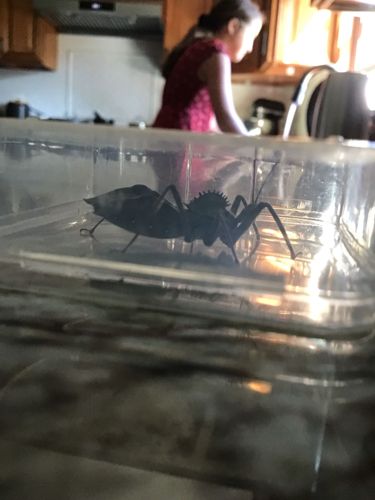Wheel Bug
Scientific Name: Arilus cristatus
Order & Family: Hemiptera (True Bugs), Reduviidae (Assassin Bugs)
Size: Typically 1 to 1.5 inches (2.5 to 3.8 cm) in length.

Natural Habitat
Found in various habitats, including gardens, fields, orchards, and wooded areas. They are often seen on plants and trees where their prey resides.
Diet & Feeding
Strictly carnivorous, preying on a wide variety of insects including caterpillars, Japanese beetles, pest bugs like stink bugs and squash bugs, and even other assassin bugs. They inject digestive enzymes into their prey to liquefy tissues before sucking out the contents.
Behavior Patterns
Wheel bugs are primarily nocturnal but can be active during the day. They are solitary predators. When threatened, they can produce a foul-smelling odor and deliver a painful bite.
Risks & Benefits
Potential risk: Their bite can be very painful to humans, comparable to a wasp sting, and can result in localized swelling, numbness, and redness that may last for several days. However, they are non-venomous to humans and do not transmit diseases. Benefit: They are highly beneficial in gardens and agricultural settings as natural predators of many common insect pests, reducing the need for chemical pesticides.
Identified on: 8/27/2025